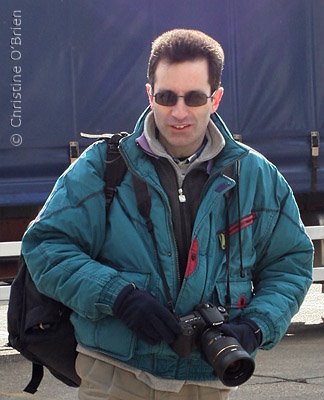Slow shutter speeds - unfreezing the still image
The still photographic image is the freezing of a moment in time. Yet throughout the history of photography there have been many attempts to portray the one thing that it might seem that photography could not show - movement.

First image taken at 1/60 sec f5 ISO 3200

Second image taken at 10 sec f16 ISO 50
Normally when we take photographs we tend to use fairly high shutter speeds. If the camera is being hand held this is necessary to prevent camera shake from being visible in an image. But this often renders everything looking completely still. This is not a criticism. Sometimes it is the best solution. But there are times when in order to convey that a person or object is moving, we need to use longer shutter speeds to emphasise that movement. The basic technique takes several forms. We can place the camera on a tripod and simply leave the shutter open for a longer time. Of course this will cause over-exposure if there is not a compensation made, either by reducing the aperture size, by reducing sensitivity (ISO), by using neutral density (ND) filters or by choosing a time of day when there is not much light (or a combination of several of these measures).
A second technique is called panning (frequently used in sporting events), where the camera tracks the subject, blurring the background to create streaks in the direction of travel. Again, depending on the speed of the subject, a tripod or monopod is often used.
A third technique is referred to as "slow-sync flash". This produces a sort of double image or composite. Again, I have seen this used in sports photography, particularly in mountain bike racing, and the results can be very impressive. The exposure for available (ambient) light is set to give a long shutter speed and normally to slightly underexpose. The speed is too long to completely freeze any part of the image. However, an additional exposure is recorded by the flash, which will render parts of the image sharp, particularly if they are close to the flash, as they receive more light.
The key to mastering any of these techniques is considerable experimentation and practice. Start unfreezing your photographs now.

First image taken at 1/60 sec f5 ISO 3200

Second image taken at 10 sec f16 ISO 50
Normally when we take photographs we tend to use fairly high shutter speeds. If the camera is being hand held this is necessary to prevent camera shake from being visible in an image. But this often renders everything looking completely still. This is not a criticism. Sometimes it is the best solution. But there are times when in order to convey that a person or object is moving, we need to use longer shutter speeds to emphasise that movement. The basic technique takes several forms. We can place the camera on a tripod and simply leave the shutter open for a longer time. Of course this will cause over-exposure if there is not a compensation made, either by reducing the aperture size, by reducing sensitivity (ISO), by using neutral density (ND) filters or by choosing a time of day when there is not much light (or a combination of several of these measures).
A second technique is called panning (frequently used in sporting events), where the camera tracks the subject, blurring the background to create streaks in the direction of travel. Again, depending on the speed of the subject, a tripod or monopod is often used.
A third technique is referred to as "slow-sync flash". This produces a sort of double image or composite. Again, I have seen this used in sports photography, particularly in mountain bike racing, and the results can be very impressive. The exposure for available (ambient) light is set to give a long shutter speed and normally to slightly underexpose. The speed is too long to completely freeze any part of the image. However, an additional exposure is recorded by the flash, which will render parts of the image sharp, particularly if they are close to the flash, as they receive more light.
The key to mastering any of these techniques is considerable experimentation and practice. Start unfreezing your photographs now.

0 Comments:
Post a Comment
<< Home